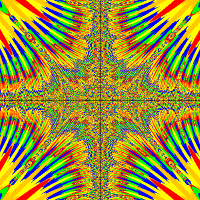So I'm making a simple Tron game, but I can move diagonally, which is bad. Here's my code
private int R = 1;
private int L = 0;
private int U = 0;
private int D = 0;
public boolean inUse = false;
/**
* Act - do whatever the PlayerOne wants to do. This method is called whenever
* the 'Act' or 'Run' button gets pressed in the environment.
*/
public void act()
{
determineIfInUse();
if(inUse = false)
{
moveRight();
moveLeft();
moveUp();
moveDown();
}
placeBeam();
}
private void placeBeam()
{
getWorld().addObject(new PropOne(), getX(), getY());
}
private void moveRight()
{
if (R == 1)
{
setRotation(0);
setLocation(getX() + 5, getY());
if (Greenfoot.isKeyDown("down"))
{
R = 0;
D = 1;
}
if (Greenfoot.isKeyDown("up"))
{
R = 0;
U = 1;
}
}
}
private void moveLeft()
{
if (L == 1)
{
setRotation(0);
setLocation(getX() - 5, getY());
if (Greenfoot.isKeyDown("down"))
{
L = 0;
D = 1;
}
if (Greenfoot.isKeyDown("up"))
{
L = 0;
U = 1;
}
}
}
private void moveUp()
{
if (U == 1)
{
setRotation(90);
setLocation(getX(),getY() - 5);
if (Greenfoot.isKeyDown("left"))
{
U = 0;
L = 1;
}
if (Greenfoot.isKeyDown("right"))
{
U = 0;
R = 1;
}
}
}
private void moveDown()
{
if (D == 1)
{
setRotation(90);
setLocation(getX(), getY() + 5);
if (Greenfoot.isKeyDown("left"))
{
D = 0;
L = 1;
}
if (Greenfoot.isKeyDown("right"))
{
D = 0;
R = 1;
}
}
}
private void determineIfInUse()
{
if (Greenfoot.isKeyDown("up") || Greenfoot.isKeyDown("down") || Greenfoot.isKeyDown("left") || Greenfoot.isKeyDown("right"))
{
inUse = true;
}
else
{
inUse = false;
}
}



